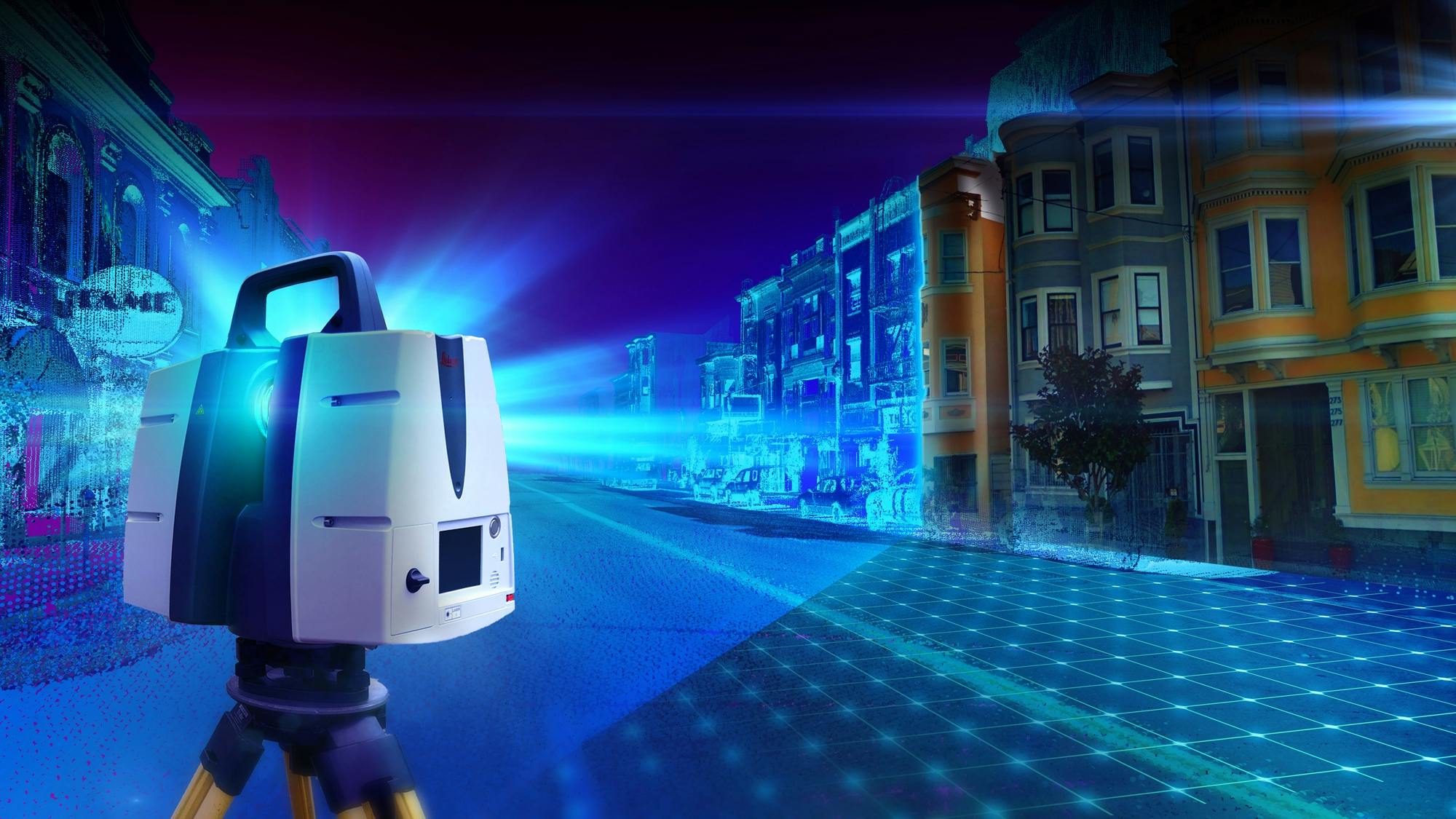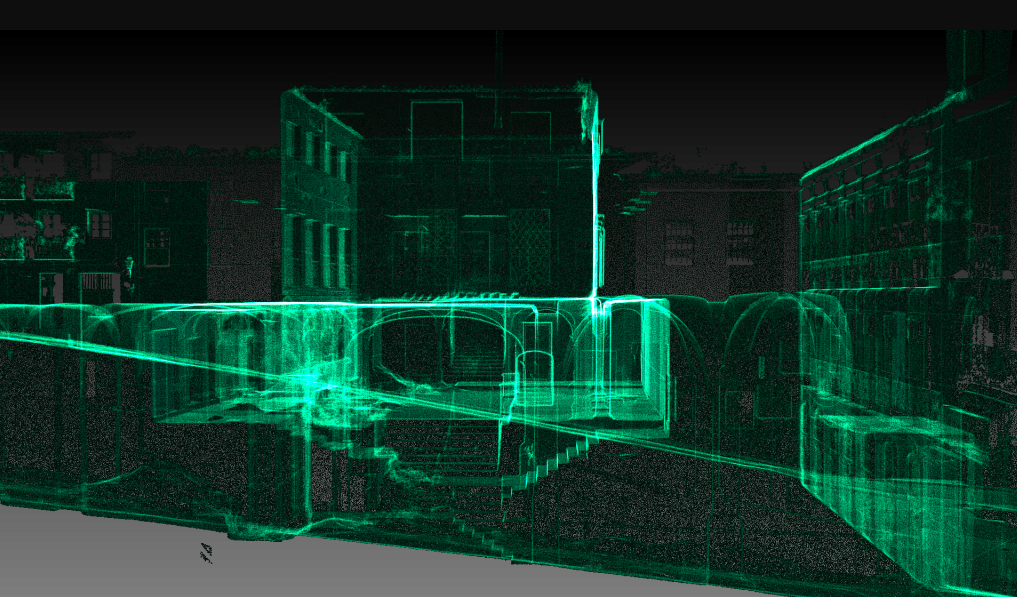Essential Facts About 3D Scanning for Projects
Wiki Article
The Future of Precision Dimension: Recognizing the Duty of 3D Laser Scanning Modern Technology
The landscape of precision dimension is evolving with the development of 3D laser scanning innovation. This advancement assures enhanced accuracy and efficiency throughout various sectors. As sectors begin to embrace these advancements, the implications for project administration and implementation come to be increasingly considerable. The transformative impacts of this innovation prolong beyond mere numbers and dimensions, hinting at a wider shift in just how specialists approach their job. What might this imply for the future?What Is 3D Laser Scanning Modern Technology?
3D laser scanning innovation is an advanced technique made use of to catch accurate three-dimensional dimensions of physical objects and atmospheres. This modern technology utilizes laser beams to collect data points, which are after that processed to develop in-depth digital representations of the scanned topics. By giving off countless laser pulses per second, 3D laser scanners can precisely tape-record the form, size, and spatial partnerships of various surfaces.The procedure typically involves positioning the scanner at various vantage factors to capture extensive information. The resulting factor cloud, a collection of numerous information points, can be evaluated and exchanged 3D models. Applications of this modern technology span numerous areas, including design, heritage, and design conservation, where it helps in documents and analysis. As a non-intrusive technique, 3D laser scanning reduces interruption to the environment, enabling detailed assessments of both existing frameworks and all-natural landscapes, therefore improving understanding and promoting informed decision-making.
Key Conveniences of 3D Laser Scanning in Various Industries
3D laser scanning modern technology offers substantial benefits across different markets by providing enhanced precision and precision in measurements. This technology not only streamlines process but additionally causes substantial time and cost savings. As organizations significantly embrace this cutting-edge method, the advantages end up being apparent in enhanced project results and performances.Enhanced Accuracy and Precision
The combination of laser scanning modern technology has revolutionized the way industries come close to measurement and information collection. This technology gives an unmatched level of precision, capturing countless data factors in a solitary scan. As a result, experts across different fields, such as manufacturing, design, and architecture, can produce extremely outlined 3D models that reflect real-world problems. Improved precision reduces mistakes connected with typical dimension methods, making sure that styles and constructions are based on precise information. Additionally, the capability to catch intricate information permits far better evaluation and decision-making, ultimately causing boosted results. By leveraging 3D laser scanning, industries can attain higher criteria of quality, making it an important device for exact measurements.Time and Cost Effectiveness
Effectiveness in time and price is a significant advantage provided by laser scanning innovation, transforming task execution across various markets. By rapidly capturing detailed 3D data, laser scanning decreases the time invested in manual dimensions and lessens the danger of mistakes. This swift information acquisition facilitates much faster decision-making and job timelines, enabling groups to allot sources a lot more effectively. Furthermore, the modern technology lowers the demand for rework, as exact models lead to much better planning and execution. Industries such as building and construction, architecture, and manufacturing advantage significantly, seeing reduced prices related to labor and materials. In general, 3D laser scanning not only enhances functional efficiency but also adds to substantial cost savings, making it a very useful device in today's affordable landscape.Applications of 3D Laser Scanning in Design and Building
As building and building jobs grow increasingly complex, the adoption of laser scanning innovation has emerged as a transformative remedy. This innovation uses precise dimensions and comprehensive 3D representations of existing structures, assisting in even more accurate preparation and style procedures. Engineers make use of 3D laser scanning to develop digital designs that catch intricate information, ensuring that renovations and brand-new building and constructions align completely with existing conditions.

The Function of 3D Laser Scanning in Manufacturing Processes
3D laser scanning plays an important duty in manufacturing processes by boosting quality assurance via specific dimensions and data collection. This technology permits manufacturers to recognize inconsistencies early, reducing errors and waste. Additionally, it streamlines production operations by assisting in much better interaction and sychronisation among teams.Boosted Quality Control
Quality control in making processes has been transformed by the combination of laser scanning technology. This ingenious approach permits precise dimensions and thorough examinations of components, guaranteeing that they satisfy strict high quality requirements. 3D laser scanning captures complex click for more info geometries and resistances, enabling suppliers to identify deviations from style specifications promptly. This modern technology significantly minimizes human error related to typical dimension approaches, offering reliable and constant data. By assisting in real-time high quality guarantee, it allows proactive adjustments in the production procedure, eventually resulting in enhanced product dependability and consumer contentment. As markets progressively adopt 3D laser scanning, the potential for better quality assurance ends up being apparent, marking a transformative shift in producing techniques.Structured Manufacturing Process
Reliable production process are progressively benefiting from the integration of laser scanning technology in manufacturing procedures. This innovation permits for fast, accurate measurements of assemblies and components, substantially lowering the moment required for arrangement and modifications. By recording accurate geometry, manufacturers can swiftly determine disparities in between design requirements and actual products, enabling instant rehabilitative actions. On top of that, 3D laser scanning assists in the smooth transfer of data in between layout and manufacturing teams, boosting collaboration and lowering mistakes. The modern technology likewise sustains electronic double production, permitting for real-time monitoring and optimization of making processes. As a result, companies can accomplish greater performance, decreased waste, and boosted total productivity, ultimately driving affordable advantage in the marketplace.Preserving Heritage: Exactly How 3D Laser Scanning Aids Cultural Conservation
As cultural heritage websites face the risk of damage and damage, ingenious technologies such as laser scanning emerge as essential tools for preservation initiatives. 3D laser scanning records detailed details of historic frameworks and artifacts with impressive precision, developing digital designs that serve several functions in conservation. These versions permit accurate paperwork of existing problems, allowing professionals to keep an eye on adjustments with time and analyze degeneration dangers.In addition, laser scanning promotes virtual restoration, assisting conservators create strategies for repairs or recreating lost elements without intrusive techniques. The modern technology additionally aids in enlightening the general public, supplying immersive experiences via virtual excursions that highlight the importance of these websites. By integrating 3D laser scanning right into social conservation techniques, stakeholders can assure that heritage is preserved for future generations while enhancing understanding and appreciation of historical contexts.
The Future Overview: Advancements and Trends in 3D Laser Scanning Technology
3D laser scanning innovation has currently transformed various industries, its future promises even higher innovations that will boost access, accuracy, and speed. Arising patterns show an increase in integration with expert system and equipment learning, leading to smarter information handling and evaluation capabilities. This synergy will allow quicker decision-making and more precise outcomes in areas such as engineering, building, and heritage preservation.Developments in hardware are my explanation anticipated to yield lighter, extra portable scanning devices, democratizing accessibility for smaller companies and specific experts. As software program continues to progress, straightforward applications will simplify complicated operations, making 3D scanning extra available to non-experts
The increase of cloud-based services will assist in real-time partnership and data sharing among stakeholders, leading the way for structured task administration. Collectively, these patterns signal a future where 3D laser scanning innovation becomes an essential device in an even wider spectrum of applications.
Often Asked Concerns
Just How Much Does 3D Laser Scanning Technology Price?

What Are the Abilities Needed to Run 3D Laser Scanners?
Running 3D laser scanners requires technical proficiency, attention to detail, spatial understanding, expertise of software for information processing, and an understanding of surveying concepts. In addition, strong analytical capacities and logical skills are vital for reliable operation.Can 3D Laser Scanning Integrate With Other Technologies?
Yes, 3D laser scanning can integrate seamlessly with various other innovations, such as Geographic Information Solution (GIS), Structure Details Modeling (BIM), and augmented truth, enhancing data precision and promoting enhanced analysis throughout various sectors and applications. - 3D ScanningWhat Is the Typical Scanning Variety Of These Gadgets?
The common scanning variety of 3D laser scanning tools varies widely, generally between 50 meters to over 1,000 meters, depending upon the version and application, affecting their suitability for various precision dimension tasks and atmospheres.Just how Long Does a 3D Laser Scanning Project Take?
A 3D laser scanning task typically takes anywhere from a few hours to numerous days, depending upon aspects such click to read more as project size, complexity, and called for information. Each task's timeline can differ considerably based on these components.The landscape of precision measurement is evolving with the arrival of 3D laser scanning innovation. 3D laser scanning modern technology is an innovative technique utilized to capture specific three-dimensional dimensions of physical objects and environments. 3D laser scanning modern technology supplies substantial benefits throughout numerous sectors by giving enhanced accuracy and precision in measurements. 3D laser scanning technology has already changed numerous sectors, its future promises also greater improvements that will boost speed, accuracy, and access. 3D laser scanning innovation generally sets you back between $10,000 and $100,000, depending on the devices's capacities and features.
Report this wiki page